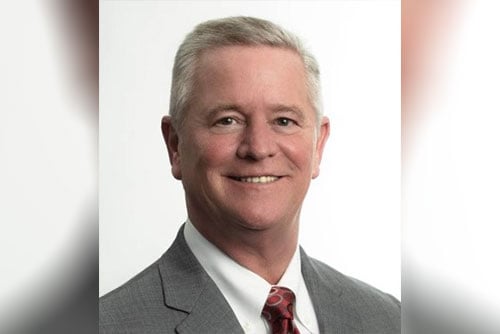

Downtown San Diego’s laid-back vibes had a real jolt of energy when the WSIA Annual Marketplace arrived in town in September. In its biggest and boldest year yet, the US wholesale and specialty insurance association (WSIA) welcomed more than 5,000 attendees to the convention, including 863 first-timers, covering the full spectrum of excess and surplus (E&S) stakeholders: wholesale brokers, managing general agents, insurance carriers, service providers, and so on.
“The energy is electric,” said Joel Cavaness (pictured), president of Risk Placement Services (RPS), and 2019 president of the WSIA board of directors. “To cross the 5,000-attendee mark is fantastic. It reflects the health of the surplus lines industry and the substantial growth we’ve managed to achieve.”
According to AM Best’s market segment report, ‘Surplus Lines Insurers Achieve Impressive Growth, Improve Operating Profitability,’ the US surplus lines market nearly doubled its pace of premium growth in 2018, driven by a healthy US economy and new investments in operating platforms. The global rating agency reported specialty insurance growth of 11.2% in 2018, compared to just under 6% in 2017.
“We’re healthy, we’re growing, and we’re having fun,” Cavaness commented. “There’s something I always tell young people that are looking for a career, which is: ‘Don’t ever attach your career to an industry that’s going backwards.’ The insurance industry – the surplus lines segment in particular – is growing significantly, and that’s because of our ability to look at new ways of doing things, new products, emerging risks, and new distribution platforms. All of that creates a platform for future growth and forward momentum.”
It also helps that the E&S market has “grown up” in recent years, and become “much more professional in its approach,” according to Cavaness. This has resulted in more insurers being comfortable in handing over their underwriting authority to third parties, like MGAs, MGUs and program administrators. The E&S market’s ability to be specialized, creative, and to provide alternative solutions to unique and complex risks is becoming “more and more attractive,” said Cavaness, especially as the surplus lines industry continues to make investments in data, analytics and improved actuarial and underwriting standards.
However, nothing’s ever 100% fun and games. While surplus lines premium has grown for seven consecutive years, catastrophe-driven losses and market competition have led to an underwriting loss for the segment for a third consecutive year, according to the AM Best report. This has resulted in a shift in the rating environment, with both admitted and non-admitted insurers increasing rates across the majority of commercial lines.
“The general marketplace is changing,” Cavaness told Insurance Business. “The rate environment, and people’s willingness to take large chunks of risk has generally changed over the course of the last few months. Today we’re seeing more and more carriers take shorter limits and make smaller bets (so to speak), so it takes a lot more effort to put together a large program will full limits.
“There are a lot of people, especially in the younger generation, who have never delivered bad news to clients. They’ve never experienced a firming marketplace. It’s our job to prepare our customers well in advance for what they might see in any particular year. Nobody likes surprises. Everybody in the chain needs to be educated on what’s happening in the marketplace, and perhaps more importantly, WHY changes are happening. I think we’ve probably missed a little bit of that WHY piece in the past. Why are we seeing these results in the industry today? What happened to cause this? It’s social, it’s economic, it’s inflation – a lot of different things go into the overall health of the marketplace.”
